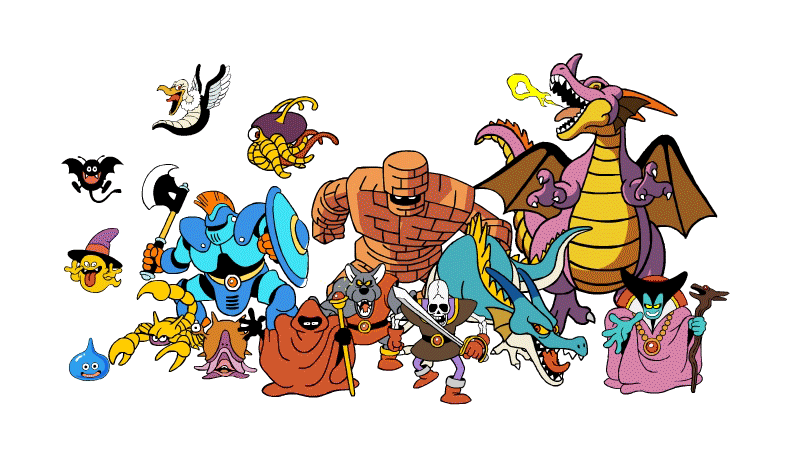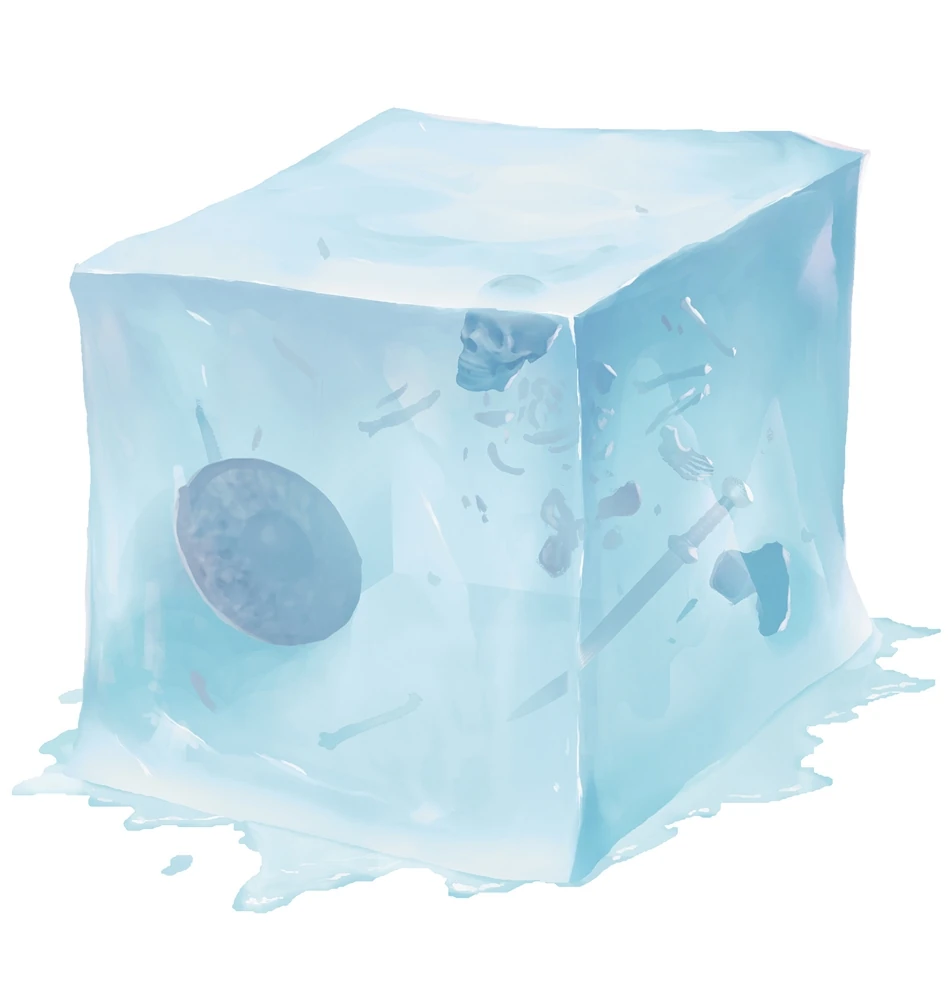Our Story Begins...
In the early 1980s, Akira Toriyama, author of the popular manga serials Dragon Ball and Dr Slump, was contacted by a game developer called Yuji Horii.
Horii had won a competition by Square Enix, and along with a few other developers, had been sent to the US for a games conference. It was there that he'd learnt of the American RPG Wizardry! - a dungeon crawler which took the tropes of fantasy gaming and mixed in puns and real-world references. It was one of the first games to take D&D-style gameplay and digitise it as a video game dungeon crawler - at least, one of the first with flashy colour graphics.
Horii was smitten. He and his team of developers cooked up their own RPG, inspired by Wizardry!'s gameplay, fantasy world and sense of humour. Toriyama had already combined an epic fantasy quest with puns and slapstick in his Dragon Ball series, and agreed to come on board the video game project as a character designer.
Father vs Son
A few years after Horii's new game, Dragon Quest, was released to huge sales and critical acclaim, a translation of Wizardry! came to Japanese shores. It received modest success, even going on to become more popular in Japan than it was back home in the States. It still fell short of its spiritual successor. Far short.
Dragon Quest is the most popular video game franchise in Japan. It's up there with Mario and Pokemon, and is considered the national video game of the country. There are themed bars and cafes. Kids got arrested in the hundreds for truancy the one time a Dragon Quest game was released on a school day (they've stuck to Saturdays since). When I was there last year, stores that didn't even sell video games had little placards and posters up, reminding everyone that a new instalment in the series was on its way.
Dragon Quest's gameplay, at least in the first instalment, wasn't too dissimilar from Wizardry!. Horii had made sure of it - he wanted to emulate the game in almost every aspect, such was his delight with the concept. On paper, there was almost nothing to distinguish the two, other than that Dragon Quest was on the more family-friendly Famicom console.
There was one more problem with Wizardry! in Japan, though: the translation had failed to preserve any of the jokes. The Japanese audience didn't mind - it was a fine game on its own, and they didn't know any better. But with its humourous streak lost, it just couldn't compete with Dragon Quest.
Monsters and Madness
 |
| Art by Parker Simmons (@parkerrsimmons) |
The design wasn't the only thing that brought a sense of fun to the fantasy. Dragon Quest games are full of puns and jokes, to a level that Wizardry! never dreamed of. Mercifully, this sense of humour has survived the translation back into English - the team that translates the series have done a fantastic job preserving the nonsense.
A few examples spring to mind - maybe my favourite is Abbot Jack, who runs Alltrades Abbey, a temple in one game where characters can change their Job (Class). Jack of Alltrades, of course, turns out to be host to a terrible demon: the Master of None. Or there are the monster names - they don't have weretigers like in D&D, instead they have weartigers - demons in tiger onesies. The huge mythical sea beast that lives off the coast of a town where everyone speaks in Welsh accents is called Lleviathan.
Dragon Quest is not a comedy series. These are well-crafted and expertly balanced RPG games, and later instalments have some of the most memorable stories and characters in any video game series. The pervasive sense of fun is just what elevates it all to something greater.
The Slime
 |
| The Slime. Look at that lil face! |
Dragon Quest's mascot, as designed by Akira Toriyama, is the Slime. The creature is everywhere in Japan - he has toys, collectables, merchandise, food products, even his own spin-off game series. The only official controller Sony have ever released for the PS4, other than the default Dualshock, is shaped like one of these idiots. Ask a Japanese child... hell, ask any Japanese person to draw "slime", don't even mention Dragon Quest - they'll draw that little dumping-shaped doofus.
The Slime is the first creature you fight in the original Dragon Quest, and serves a similar purpose in every subsequent game. It's a weak, low-level monster that doesn't do much more than get in your way and force you to learn how the battle system works. There are other slime variant that show up later that might present more of a challenge, but this guy is happy where he is: as a weak, pathetic blob of goop with a gormless grin and nothing much else.
He's fun, and that's all he needs to be to be one of the most famous monsters in gaming.
Start Talking About D&D or I'm Out of Here
 |
| There we go. Familiar territory. |
The Cube, along with the Rust Monster and the Rug of Smothering, come from the Gygaxian School of Fuck You, That's Why. These are creatures specifically designed to trick and trip up players who think that they know everything, or that they're safe, or that they've worked out how to beat the dungeon.
This is... not a fun way to play, for most of us. But it sure did give us some iconic monsters.
Get to the Point
Dragon Quest's monsters are dumb, fun silly cartoons. Toriyama's idea of a Chimera is a fat snake with a goose's head. But they want to kill you.
The Gelatinous Cube - or the Owlbear, or a bunch of other WotC IPs, are stupid. They're weird little beasts imagined up by a man who wanted to fuck his players over so much that he wrote backstory for a bag of knock-off dinosaur toys and used them as minis, so they wouldn't be able to predict what was coming. They're stupid monsters. But they want to kill you.
It doesn't matter how nonsensical the concept is. Try explaining to an Owlbear that it's actually more cute than scary. It's just gonna keep trying to rip your character's face off. You'd better learn how to kill that adorable Slime, or it's going to kill you. The fight is still the same as it would be with any other monster - get rid of their HP, hold on to yours. It's just more fun when you and your friends are all cracking up about the demon in a onesie.
The most bizarre, the most ridiculous, the most laughable parts of your game are probably the best parts. They'll certainly be among the most memorable.
You're all sitting around rolling dice and pretending to be other people. If you can't laugh, what hope is left for you?
Plug Time
 |
| Art by Nicoletta Migaldi |
9 monsters, 4 spells and a playable race - all slime.
It's pay-what-you-want, and you can get it right here.
***
EDIT: A corollary! One thing I didn't mention, lest I began writing an article about Dragon Quest rather than TRPGs, is just how much DQ has influenced the entire fantasy genre in Japan. Mainstream depictions of fantasy in cartoons, comics, films, and especially other games to this day owe a huge debt to Toriyama's work. So, by extension, there's a big D&D flavour in the modern Japanese fantasy genre (because, y'know: D&D >> Wizardry! >> Dragon Quest >> everything after).
That even comes back on itself on occasion. Check this article out, with the official Japanese printing of the Rules Cyclopedia for old-school D&D. See the little hat on the cleric, the whole look of the clothing, the Shoulder Pads? That's straight up Toriyama. Pretty cool!
No comments:
Post a Comment